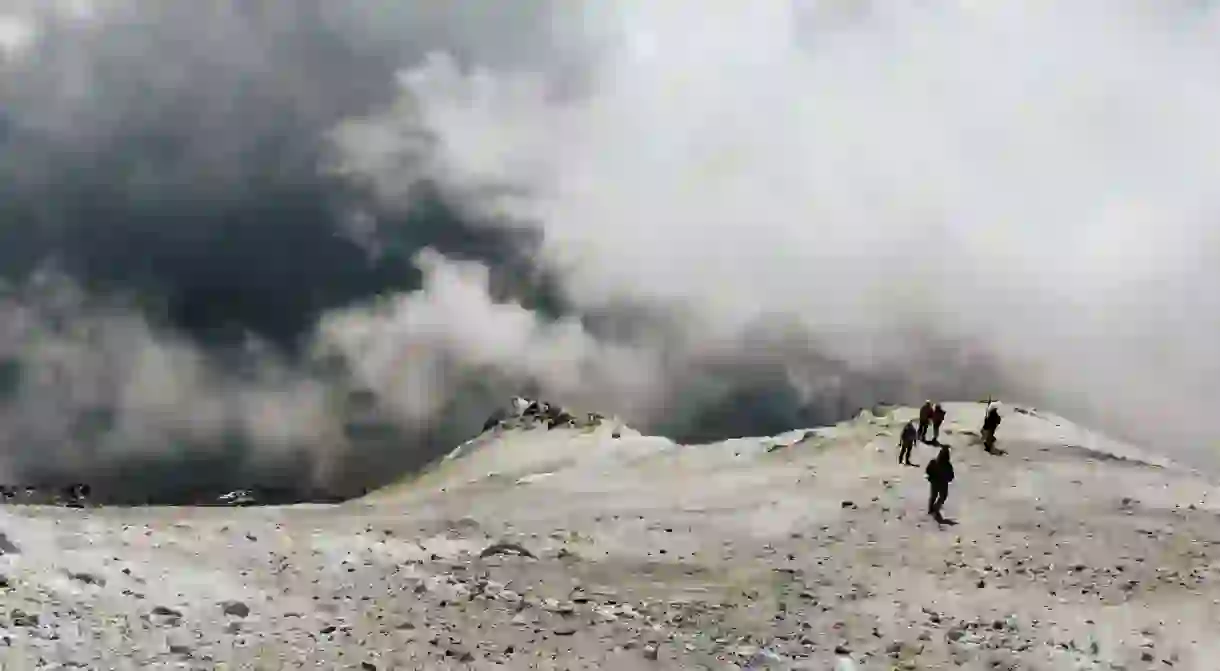A Guide to Hiking Up Mount Damavand in Iran

With so much ancient history and architecture to marvel at, you might forget that Iran has also got some breathtaking nature. Sitting proudly at the top of the list is the symbol of Iran, Mount Damavand, whose peak always seems to be enveloped in a halo of clouds. Discover your next great adventure in Iran with our guide to hiking Mount Damavand.
At 5,671 meters (18,606 feet), Mount Damavand is the highest peak in Iran and commonly referred to as the “roof of Iran.” Located in the Alborz range, this volcano is more than just one of the country’s spectacular natural wonders. Damavand plays a prominent role in Iranian folklore, namely in Ferdowsi’s epic poem Shahnameh. In one legend, evil tyrant Zahak is imprisoned here after being defeated in a revolt. It’s also the site where legendary hero Arash the Archer shoots an arrow to define the border between the disputing lands of Iran and Turan. These days, Mount Damavand is depicted on both the reverse side of the 10,000 rial note and Damavand-brand bottled water.



Because there haven’t been any eruptions on record, Damavand is thought of as a dormant volcano, although it is sometimes considered potentially active due to the sulfurous gases emitted from near the crater.



Damavand is one of the most accessible 5,000-meter peaks in the world, and there are 16 routes of varying difficulty. Some are better suited towards more experienced climbers with access to technical equipment. On the other hand, a route like Yakhar Valley, which is home to one of the largest glaciers, is considered nearly impossible to ascend. Hot springs flank the southern face, making it the most popular route, with a midway camp at 4,250 meters (13,943.5 feet), while the western path is known for its breathtaking view of the sunset. The recommended season is between June and September, with winter months recommended only for seasoned mountaineers.



An ideal hiking itinerary to Damavand would take about four to five days, though accomplished and physically fit hikers may be able to reach the summit in the better part of two days. Culture Trip photographer Sina Abasnejad trekked Damavand on a four-day tour with Alibabatrek, a team of experts who lead both culture and nature tours. “We had to go through acclimatization climbs to avoid any altitude sickness, which means we would climb higher than our rest stops then come back down in order for us to get used to the altitude,” he says of the experience. As the must-hike mountain in Iran, shelters, camps, and guest houses are available along the way, one of the best of which is Polur Complex (named after the village), built by the Iran Mountaineering Federation.



A trek to the “roof of Iran” is sure to be one of the most memorable and unique experiences you’ll have while visiting. You’ll not only have an unbeatable sense of accomplishment, but you will have also earned the utmost respect of any Iranian you meet thereafter, which is perhaps even more satisfying.

























